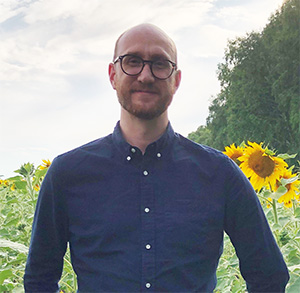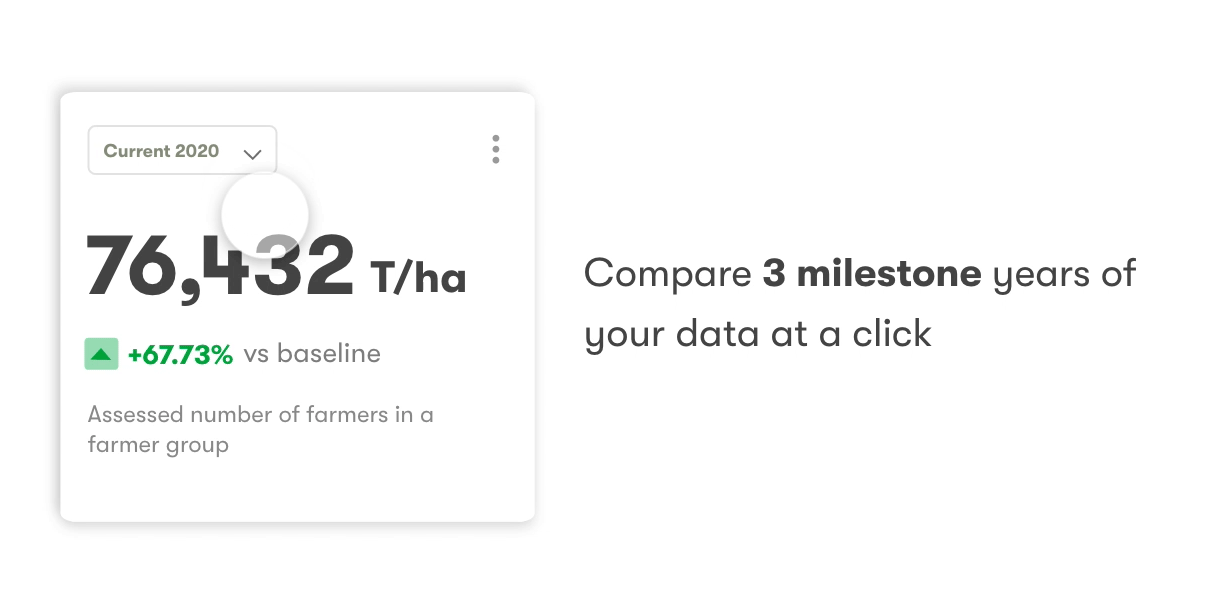FROM THE ARMY TO REFUGEES, ACADEMIA TO ATSOURCE - MEET DR OLDFIELD WHO MAKES THE METRICS MATTER
I never thought I’d find a job in the corporate world that could utilise all my experiences, from managing a refugee camp for Rohingya Muslims in Bangladesh, to my academic career, or the 10 years I spent in the Army.
 But that’s what I feel about working on AtSource for Olam. Of course, it’s different – working with marginalised people in a refugee camp to the relative calm of the Olam London office - but essentially I see both roles giving me the opportunity to impact people’s lives and have a positive effect on the planet.
But that’s what I feel about working on AtSource for Olam. Of course, it’s different – working with marginalised people in a refugee camp to the relative calm of the Olam London office - but essentially I see both roles giving me the opportunity to impact people’s lives and have a positive effect on the planet.
As Metrics Manager, it’s my job to oversee all data that enables AtSource to provide the social and environmental metrics for an agri-product like cocoa or coffee from where it’s grown, through processing and transportation and right up to door of our manufacturing and retailer customers. That’s a lot of data, which is an enabler to create such positive change through the corresponding sustainability programmes the country teams co-ordinate on the ground. Most importantly, I make sure we are showing the correct and latest data to the customer via their digital dashboard, the level of which will depend whether they are buying product through AtSource Entry, AtSource Plus or AtSource Infinity.
Let me explain how it works: for AtSource Plus we show customers up to 99 metrics - 55 of those are absolutely material (‘core’) to the majority of agri supply chains, such as forest loss risk or human rights issues. There are then another 44 metrics which can also be assessed for materiality – only some of which may be relevant. The key point is that we can’t avoid reporting on a topic just because it is difficult to deal with – this is the whole point of transparently opening up our supply chains to our customers. Many metrics are environmental, so for example, climate change and land use, and about 62 cover social areas, such as diversity and inclusion, education, health and nutrition.
It’s a huge amount of insight available at the click of a mouse. But behind it lies countless visits to farms, conversations with farmers and discussions with warehouse managers and so on. An important platform that feeds into AtSource is OFIS (Olam Farmer Information System), which is one of Olam’s main data collection technologies. An Olam field officer will go out to each farm, for example cocoa smallholders, and GPS map the size of the farm, and record the age of the trees from which a maximum yield can be estimated with the right support. OFIS also assesses the distance to social infrastructure for communities like clinics and schools – if there aren’t any there’s going to be a much higher risk of child labour or health problems.

It’s those teams on the ground that do the hard work and make AtSource such a data rich platform and holistic package of benefits for our customers. Not only do my colleagues collect the data but they also implement the sustainability programmes to improve the footprint, which we are calling metric improvement plans (MIPs) on the AtSource platform. These ensure customers can still rely on supply from that region in the future and meet consumer demand for ethically sourced ingredients.
The data we collect enables us to offer granular insight, for example, we can see if a group of farmers are using more fertiliser than they need. If you then roll out an improvement plan to say, 25,000 farmers, I can show customers the difference in the CO2 footprint for that supply chain. If we then collaborate on a programme to show farmers how to compost their waste to utilise as organic fertiliser, we further reduce their need for chemical fertiliser, which results in a reduced carbon impact. The strength of AtSource is that it allows us to measure and report this using a state-of-the-art footprint calculator.
Perhaps, with that level of detail, it’s no surprise to me that the majority of customers are opting to use the AtSource Plus tier, because they want data on the actual products they are purchasing and we also give traceability back to farmer group. AtSource Entry level also gives climate, land and water footprints but the data is a country level average for that origin, rather than being specific to that supply chain.
In the seven months I’ve been at Olam I’ve experienced how AtSource is putting what I’ve learnt at home and abroad - including eight years spent in academia and the three years in the humanitarian sector- into practice.
At University College Dublin I was researching the implications of waste valorisation in a circular economy - so the process of reusing agri-food waste and converting it into more useful products. Before that, using my degree in Disaster Management, I worked in emerging countries immediately after crises, for example in Myanmar after Cyclone Nargis, and, of course, the refugee camp for Rohingya Muslims in Bangladesh, which was the hardest year of my life, maybe even more so than the 10 years I spent in the British Army.
This is the first time I’ve worked in the corporate world, but it’s obvious why the AtSource project was so attractive to me - when I was working in academia, I never really got to see how my research was implemented, but Olam has a huge global footprint that really aligns with much of the work I’ve previously done and allows me to drive change with data as an enabler.
Plus, I’ve seen firsthand how the passion I feel for what AtSource can achieve is shared around the world. I’ve already been to Côte d’Ivoire, Ghana and Russia with Olam and, just like me, the people I meet are so passionate about what they do and really care. There are definitely days when my head hurts with the sheer scale of what we are trying to achieve, and the different requirements of each supply chain, origin, farmer group and customer.
Yet at the end of day, when I explain my job to friends and family, they are fascinated by what AtSource is trying to achieve, and how I have the opportunity to utilise all of my experiences from my diverse background. They get then why we say that AtSource really can help us achieve our company purpose to re-imagine global agriculture and food systems.
